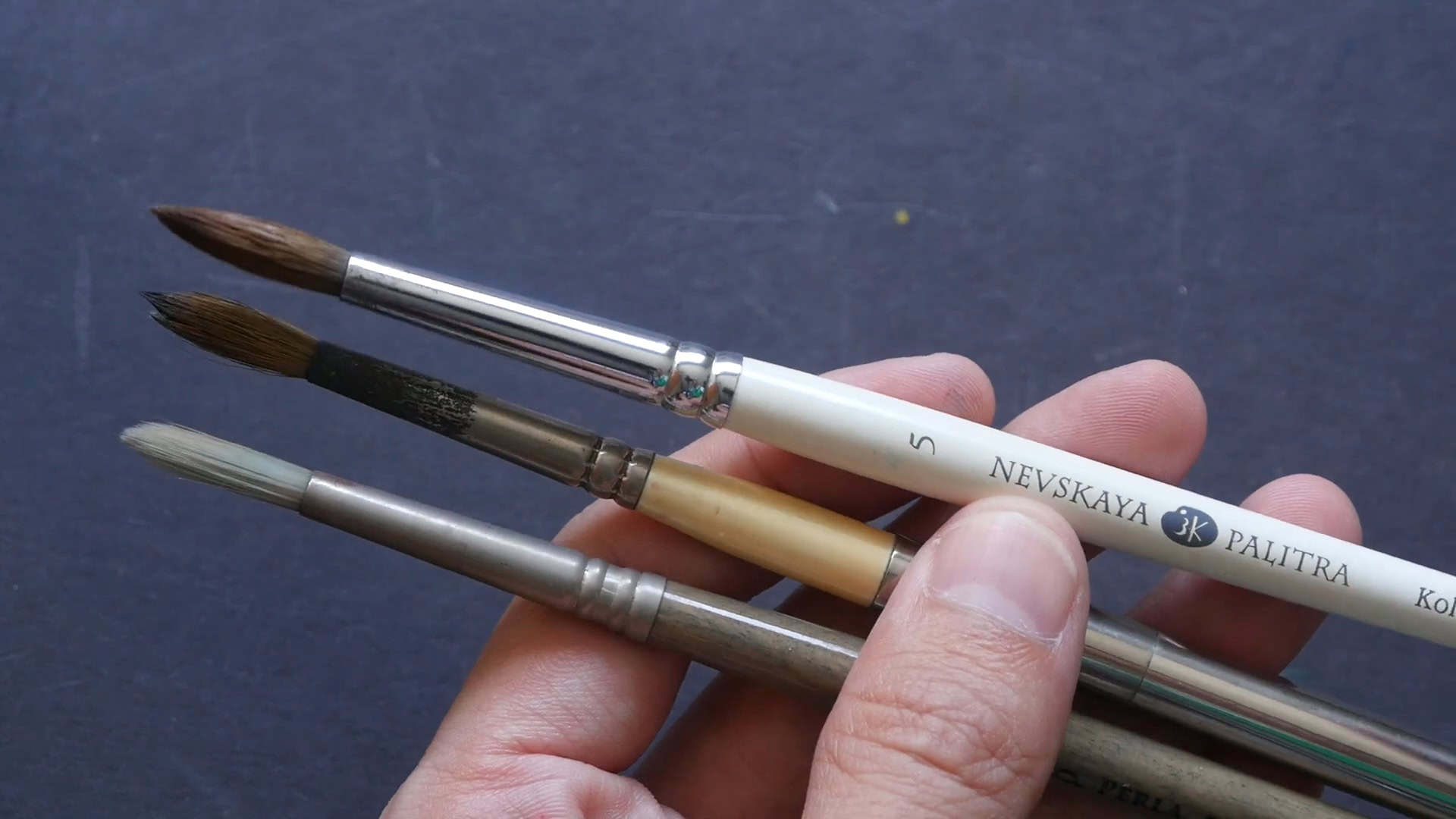Do you struggle with keeping your watercolor brushes clean?
Over time, paint buildup can ruin the bristles and affect their performance. I’ve experimented with different cleaning methods, and today, I want to share how I personally wash my watercolor brushes.
This method works well for me, and I hope it helps you, too! Let’s dive into the tools, techniques, and best practices I use to keep my brushes in shape.
Contents
Materials I Use for Washing My Brushes
Before we begin the cleaning process, let me introduce the materials I use. Having the right tools makes cleaning easier and helps extend the life of your brushes.
Water Containers
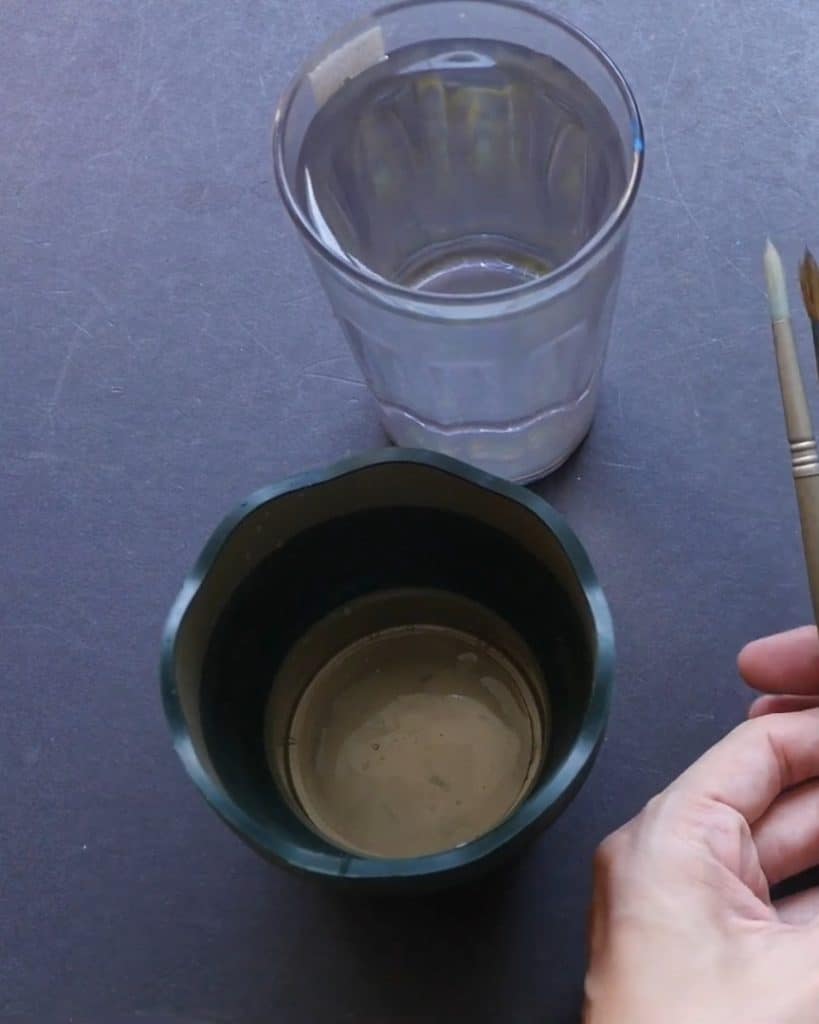
I always use two cups of water when painting. One is for rinsing the brush, and the other is for getting clean water.
When painting outdoors, I bring a small bottle of water for cleaning. My brushes tend to get dirtier since I usually have only one bottle outside.
I also use a collapsible water cup made by Faber-Castell. This cup is great because I can push it down to make it compact and easy to carry.
It also has grooves where I can rest my brushes while painting.
Watercolor Brushes in My Collection

I use 3 main brushes:
- Nevskaya Palitra Size 5 Kolinsky Sable Brush – This is my go-to brush for tutorials. It’s new, and the ferrule (the metal part) is still glossy.
- Rosemary Kolinsky Sable Brush – A collapsible brush that I often take outdoors. It’s very convenient, but it gets dirty because I use it outside usually.
- Escoda Perla Brush – I don’t use this brush often, so the ferrule has lost its shine. The bristles have also become stained with watercolor over time.
Brush Cleaning Soap
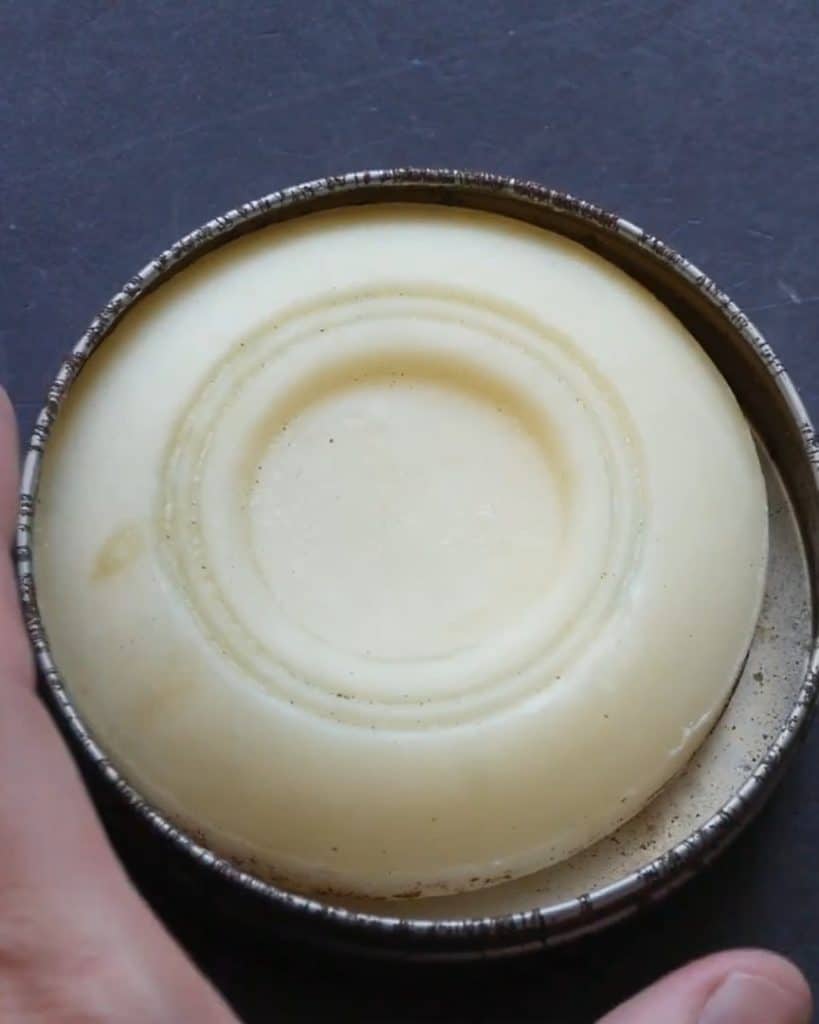
When water alone isn’t enough, I use Da Vinci brush soap. It comes in a metal tin, but mine is old, and rust has started to form around the edges.
Despite the rust, the soap still works fine for deep cleaning.
My Process for Cleaning Watercolor Brushes
Now, let’s get to the most important part—how I wash my brushes. This process helps remove paint buildup while keeping the bristles in good condition.
Regular Rinsing and When to Use Soap
Most of the time, I clean my brushes by simply rinsing them under running water or in a cup of clean water.
However, rinsing alone isn’t enough if a brush is extremely dirty. That’s when I turn to brush cleaning soap.
Step-by-Step Cleaning Process
Step 1: Wet the Brush
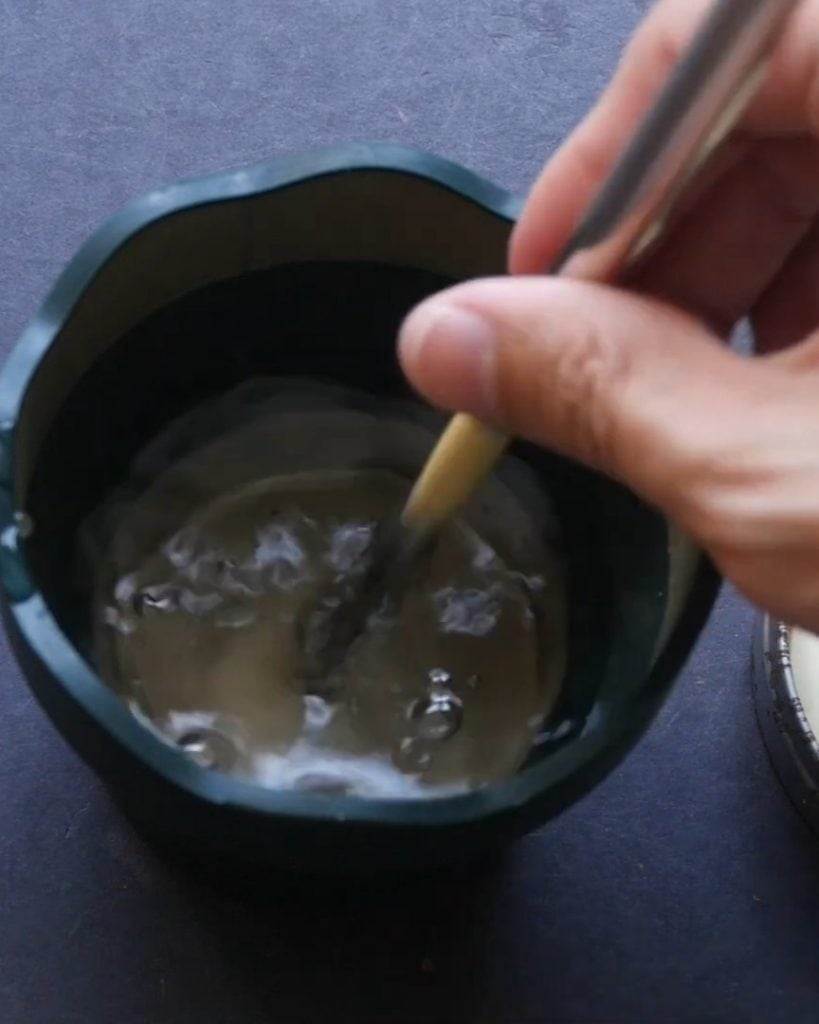
First, I wet the bristles with clean water. This helps loosen any leftover paint.
Step 2: Prepare the Soap

I add a few drops of water to the brush soap. The soap has a small indent, which holds water and makes it easier to work with.
Step 3: Swirl the Brush in the Soap
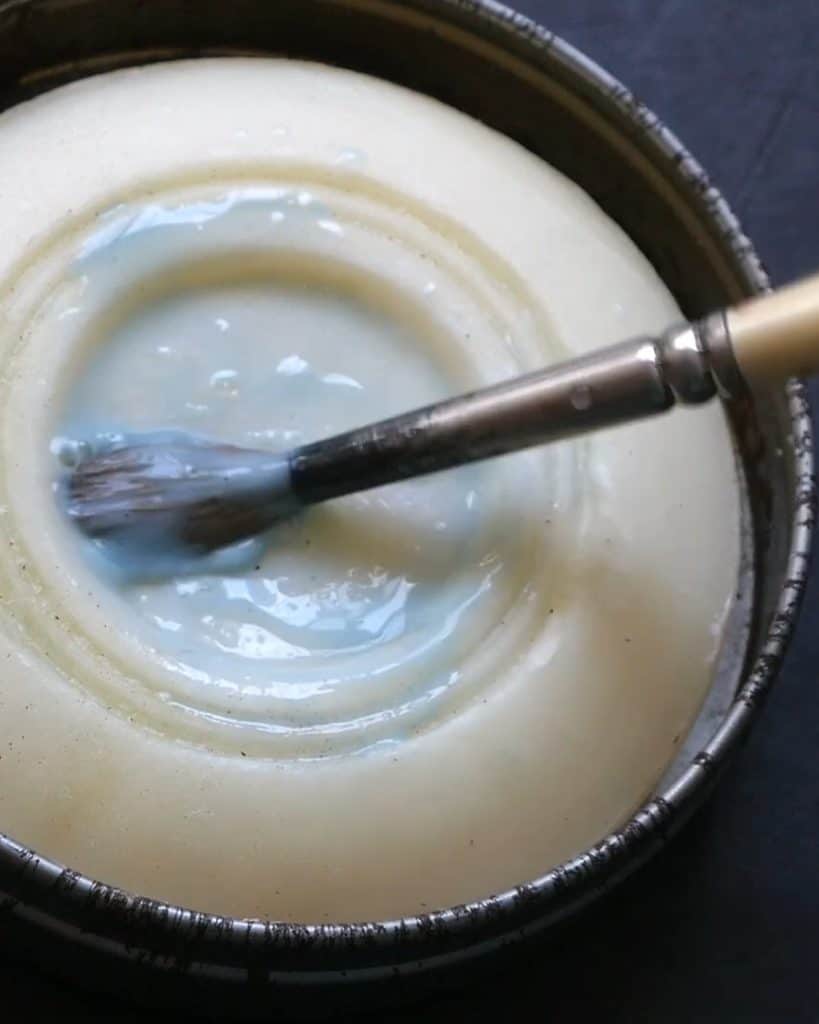
I gently swirl the brush around in the soap to lift the paint from the bristles. As I do this, I check if there is any leftover color.
Sometimes, I notice that I didn’t clean the brush properly the last time I used it.
Step 4: Rinse the Brush

After working the soap through the bristles, I rinse the brush in a cup of water to remove the soap.
Step 5: Check for Leftover Paint
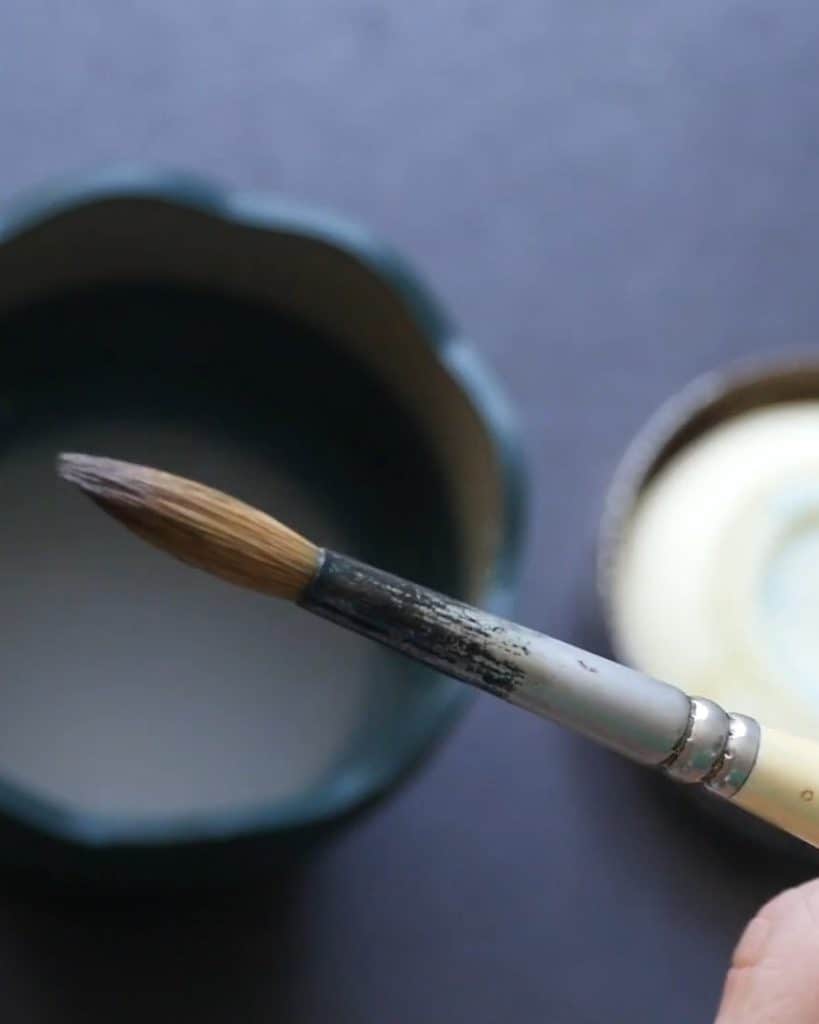
If the brush still looks dirty, I repeat the process. Some areas, especially near the ferrule, might need extra attention.
Step 6: Gently Scrub if Needed
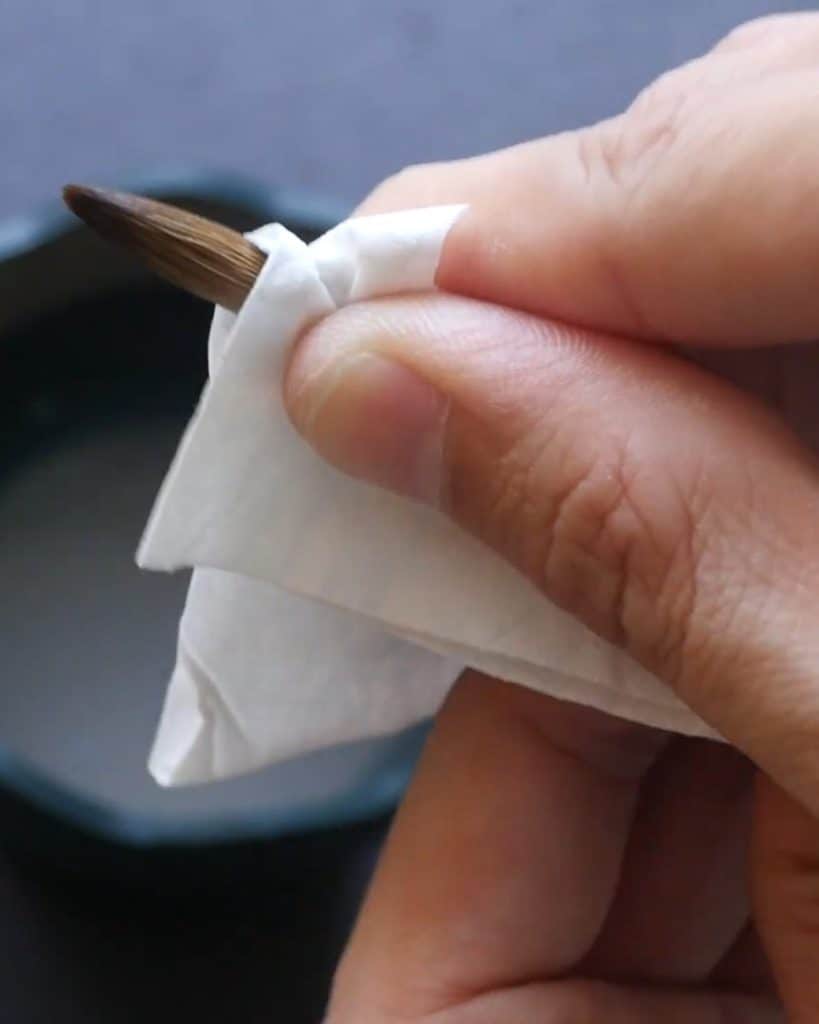
For stubborn stains, I twist the brush slightly while cleaning with a paper towel. But I ensure not to press too hard, as this can damage the bristles.
After washing, I compare the cleaned brush to a dirty one. The bristles should look cleaner, although some stains from highly pigmented colors like Phthalo Green or Phthalo Blue might remain.
Common Issues When Cleaning Watercolor Brushes
Even with proper cleaning, a few issues can come up. Here’s how I deal with them.
Stubborn Paint Residue and Staining
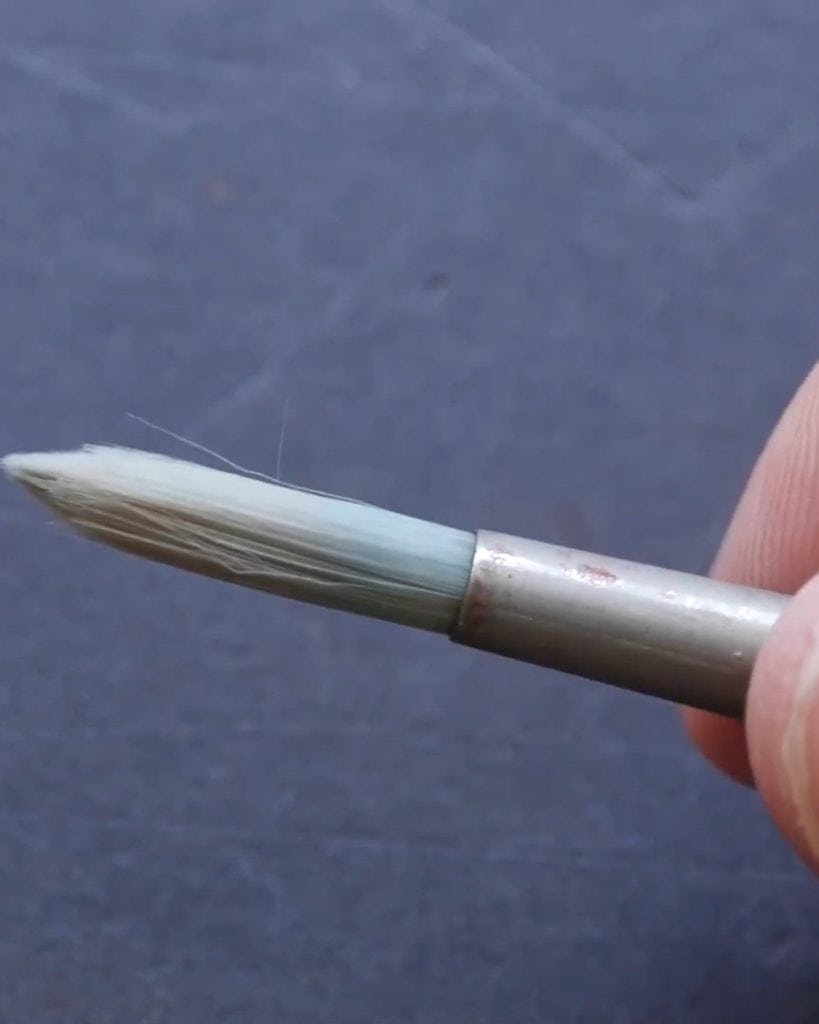
Some colors, like Phthalo Blue and Phthalo Green, stain bristles permanently.
Even after thorough cleaning, the white bristles of my Escoda Perla brush still have a tint.
This doesn’t affect performance, so I don’t worry too much about it.
Handling Brush Hair Damage
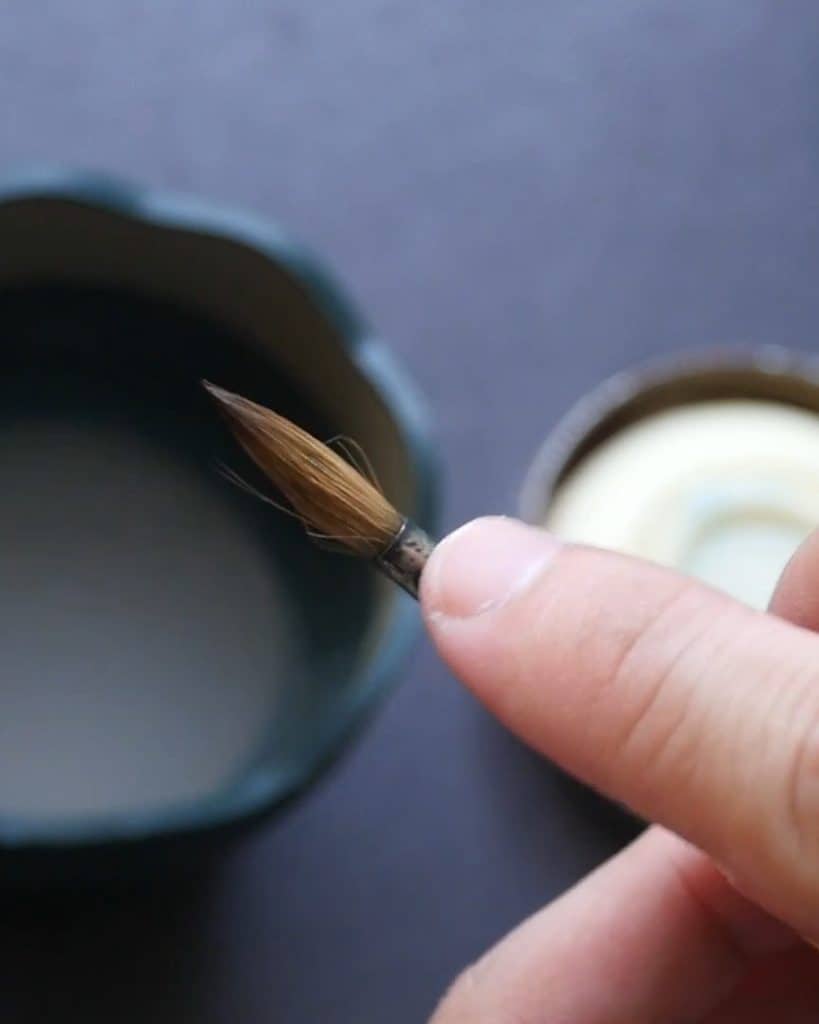
If I scrub too hard, the bristles can lose their shape. That’s why I use gentle swirling motions instead of pressing down too firmly.
Problems with Metal Ferrules and Water Damage

I never fully submerge my brushes in water. If water seeps into the ferrule, it can weaken the glue that holds the bristles, causing them to fall out over time.
Best Practices for Drying Watercolor Brushes
After cleaning, drying brushes properly is just as essential. Here’s how I do it.
Recommended Drying Methods
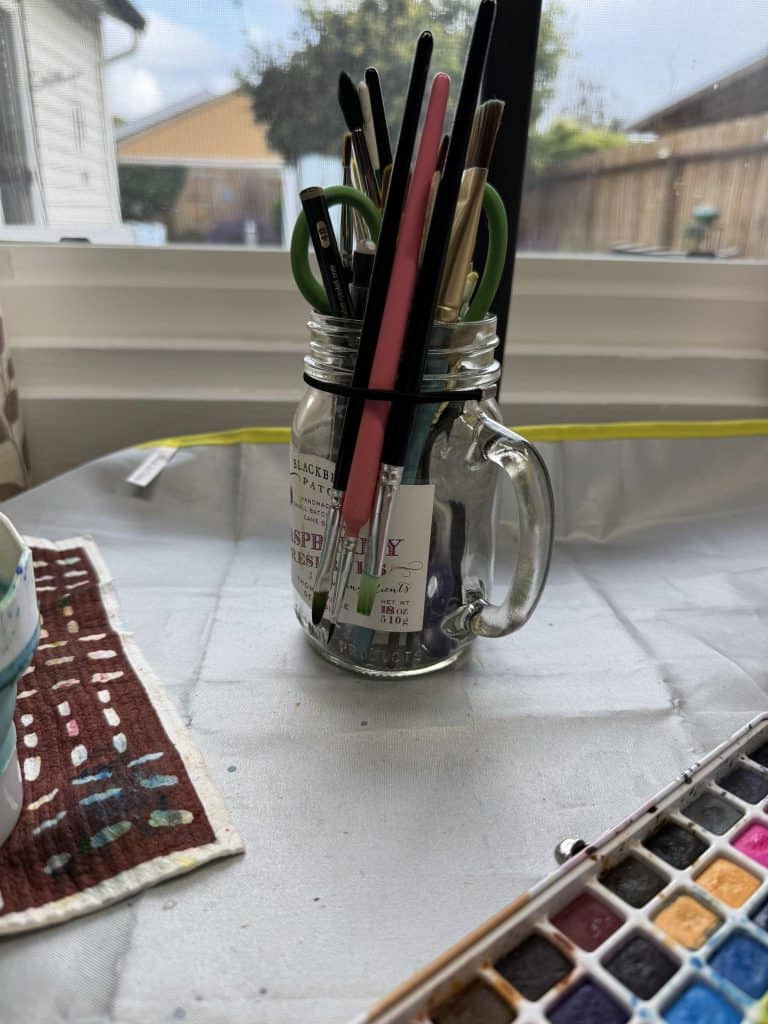
Most brush manufacturers recommend drying brushes by hanging them upside down.
This allows water to flow down and evaporate faster.
Another option is laying them flat to prevent water from seeping into the ferrule.
Personal Drying Preferences
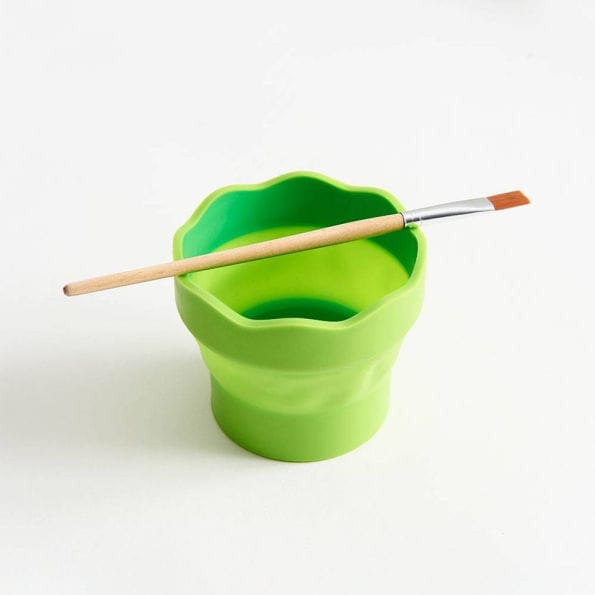
Personally, I dry my brushes in a cup with the handle down and the bristles up.
Some people worry that water might collect in the ferrule, but I’ve never had an issue because I place my brushes near a window where they dry quickly.
Recently, I started using my Faber-Castell collapsible cup for drying. It has grooves that let me rest my brushes horizontally, which is a great alternative.
Sometimes, I also dry my brushes on my watercolor palette.
Wrapping Up
Cleaning watercolor brushes properly helps them last longer and perform better.
My method may not be the “best practice,” but it works well for me.
If you struggle with keeping your brushes clean, try this approach and see if it helps!
How do you wash your watercolor brushes? Let me know—I’d love to hear your experiences. Thanks for reading!

